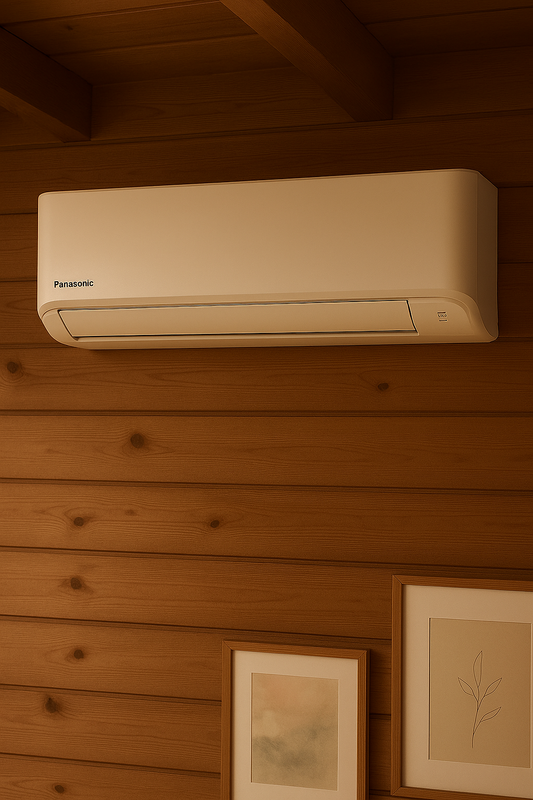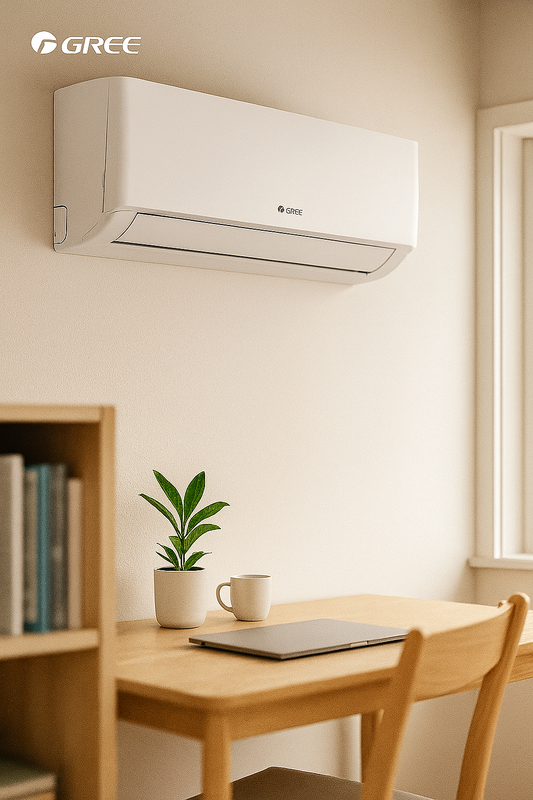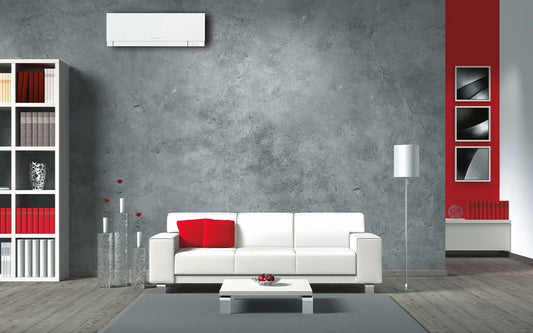Installation av Luft-Luft Värmepump
Inledning
Luft-luft värmepumpar är en effektiv och miljövänlig lösning för att reglera temperaturen i hemmet. Denna artikel kommer att utforska processen för installation av en luft-luft värmepump, dess fördelar och användningsområden samt vanliga frågor som kan uppstå vid installationen.
Definition och bakgrund
En luft-luft värmepump är en typ av värmepump som använder utomhusluften för att producera värme till inomhusutrymmen. Genom att utnyttja den omgivande luften kan värmepumpen effektivt värma upp eller kyla ner ett utrymme.
Fördelar och användningsområden
En av de främsta fördelarna med luft-luft värmepumpar är deras energieffektivitet. De kan producera mer värmeenergi än den elektricitet de förbrukar, vilket resulterar i lägre energikostnader för användaren. Dessutom kan luft-luft värmepumpar också användas för att kyla ner utrymmen under varma sommardagar, vilket gör dem mångsidiga året runt.
- Låga energikostnader
- Miljövänlig
- Möjlighet till både uppvärmning och kylning
- Enkel installation och underhåll
Relaterade tekniker, begrepp eller variationer
Det finns flera olika typer av värmepumpar, inklusive luft-vatten värmepumpar och mark-vatten värmepumpar. Luft-luft värmepumpar skiljer sig från dessa genom att de inte kräver en vattenkälla för att fungera, vilket gör dem lämpliga för många olika typer av fastigheter.
Vanliga frågor (FAQ)
Hur lång tid tar det att installera en luft-luft värmepump?
Det beror på storleken på fastigheten och andra faktorer, men installationen kan vanligtvis genomföras på ett par dagar av en kvalificerad installatör.
Hur mycket underhåll kräver en luft-luft värmepump?
Luft-luft värmepumpar kräver regelbunden rengöring och underhåll för att bibehålla sin effektivitet. Detta inkluderar att rengöra filter och kontrollera att systemet fungerar korrekt.
Sammanfattning
Installation av en luft-luft värmepump är en kostnadseffektiv och miljövänlig lösning för att reglera temperaturen i hemmet. Genom att utnyttja den omgivande luften kan dessa värmepumpar både värma upp och kyla ner utrymmen, vilket gör dem mångsidiga året runt.
Installation Process
The installation process of a air-to-air heat pump involves several steps to ensure proper functioning and efficiency. It is essential to consider factors such as the location of the outdoor unit, the positioning of indoor units, and the electrical connections. A qualified installer will assess the property and determine the most suitable placement for the heat pump units to achieve optimal performance.
Energy Efficiency Benefits
One of the key advantages of air-to-air heat pumps is their energy efficiency. By harnessing the ambient air, these systems can produce a significant amount of heat energy while consuming minimal electricity. This results in reduced energy costs for the user, making them a cost-effective heating and cooling solution.
Regulating Indoor Temperature
With the ability to provide both heating and cooling, air-to-air heat pumps offer a versatile solution for maintaining comfortable indoor temperatures throughout the year. Whether it's the cold of winter or the heat of summer, these systems can effectively regulate the indoor climate, ensuring a pleasant living environment.
Installation Considerations
When installing an air-to-air heat pump, it's important to consider factors such as insulation, building layout, and the size of the property. Proper insulation and an efficient building layout can contribute to the overall effectiveness of the heat pump, maximizing its performance and energy savings.
Environmental Impact
By utilizing the surrounding air as a renewable heat source, air-to-air heat pumps contribute to reducing carbon emissions and minimizing environmental impact. Their eco-friendly operation aligns with sustainable living practices, making them an environmentally conscious choice for heating and cooling.
Remote Control and Smart Features
Many air-to-air heat pumps are equipped with remote control functionality and smart features, allowing users to conveniently adjust settings and monitor energy usage from their mobile devices. This level of control and automation enhances user experience and provides greater flexibility in managing indoor comfort.
Professional Installation
It's recommended to have the air-to-air heat pump installed by a professional to ensure proper setup and performance. Professional installers have the expertise to optimize the system's efficiency and address any specific requirements of the property.
Warranty and Maintenance
Most air-to-air heat pumps come with a warranty, and it's crucial to adhere to the manufacturer's maintenance guidelines to uphold the warranty coverage. Regular maintenance, such as cleaning filters and inspecting components, is essential for prolonging the lifespan of the heat pump.
Optimizing Air Circulation
Efficient air circulation within the property can enhance the performance of the air-to-air heat pump. Proper positioning of indoor units and ensuring unobstructed airflow contribute to achieving balanced heating and cooling throughout the space.
Integration with Existing HVAC Systems
For properties with existing HVAC systems, integrating the air-to-air heat pump with the current setup may require coordination with HVAC professionals. This ensures seamless operation and maximizes energy-saving potential.
User-Friendly Controls
Modern air-to-air heat pumps often feature intuitive user interfaces and programmable settings, allowing users to customize temperature schedules and optimize energy usage based on their specific preferences and daily routines.





